Guitars with two or three pickups offer lots of sonic variety, but they also introduce a particular problem that single-pickup instruments—such as Fender Esquires and some Les Paul Juniors—don't have. When you switch pickups on a multi-pickup guitar, you can experience volume differences between one position and another. This can be rather annoying when you're in the studio or playing a gig. Just as frustrating is when your treble strings sound weak, but the bass strings are ridiculously loud. In both cases, the fix can be as simple as adjusting your pickups.
Guitarists often overlook this tweak, either after a setup or replacing pickups. Adjusting pickup height sounds simple, but pickups that aren't adjusted properly can cause problems, which I'll describe in detail below. Fortunately, all these problems are correctable.
To show you how to adjust pickups yourself, we'll look at two guitars—a Stratocaster and a Telecaster. Both of these project guitars sport single-coil pickups and both are terribly out of adjustment.
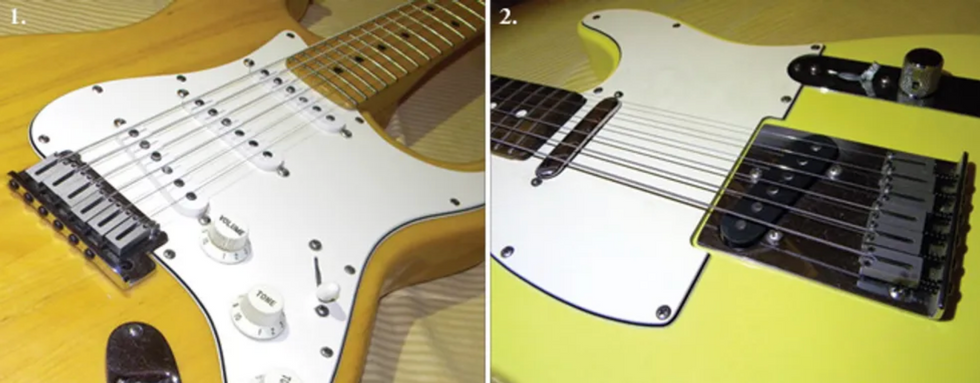
1. This Strat needs the height of its three single-coil pickups adjusted for optimum sound. 2. Our project Tele's two single-coils also need to be adjusted for proper height.
Step 1: Gather your tools and prepare your workspace.
You only need two tools for this project, but it's important to use the correct ones. Here's what I use when adjusting pickups:
- 6" precision machinist ruler
- Phillips head screwdriver
Step 2: Measure current pickup height.
First tune the guitar to pitch and then start taking its current measurements. These baseline measurements are very important because you need to know where the pickups are now in relation to where they should be.
Here's how to measure a pickup's height:
- Press the 1st string onto the last fret and hold it down.
- Using the 6" machinist ruler, measure the distance from the top of the pole piece to the bottom of the 1st string. Write down the measurement.
- Repeat this process with the 6th string, again holding it against the last fret and writing down the measurement.
- Now repeat the process with the remaining pickup(s).
- At this point you'll have measurements for both the treble and bass sides of each pickup.
How did our project guitars measure up?
The Strat's bridge pickup was 6/64" on the treble side and 8/64" on the bass side. The middle pickup measured 8/64" on both treble and bass sides, and the neck pickup measured 2/64" and 4/64", respectively, for the treble and bass sides. As we'll see in a moment, these distances are way off. The project Tele was also out of whack, with its bridge pickup measuring 4/64" and 2/64" (treble and bass) and neck measuring 2/64" and 4/64".
Not only were the heights of these pickups all over the map, the Tele's neck pickup was loose and wobbly. That's a tell-tale sign that the rubber compression tubing (which acts like a spring) over the pickup screws had either shrunk or was too short to begin with. To correct it, I had to remove the strings and pickguard, and then separate the pickup from the guard. After installing new tubing, I was able to adjust the pickup without it bobbing inside the guitar.
When you finish recording the baseline measurements on both the treble and bass side of each pickup, you're ready to adjust them to their ideal specs.
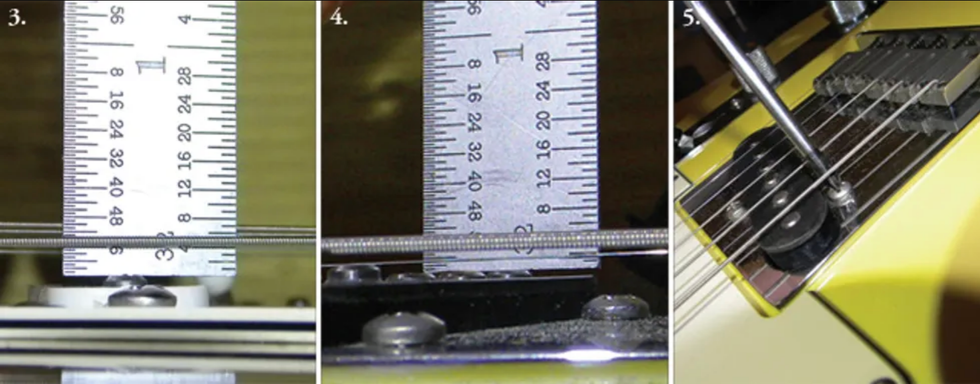
3. Using a machinist ruler to measure the distance between the top of the pole piece and the bottom of the 6th string on our project Stratocaster's bridge pickup. This pickup is too low. 4. The bridge pickup is set too high on our project Telecaster. 5. Adjusting a Telecaster bridge pickup. In addition to setting its overall height, the three adjustment screws let you control the pickup's fore and aft tilt. For maximum sustain and power, make sure the top of the bridge pickup's pole pieces sit parallel to the strings.
Step 3: Correct the pickup height.
There's a lot of debate about what constitutes "correct" pickup height, but conceptually the goal is simple: Set the pickup height to give your guitar optimum volume, clarity, sustain, and treble-to-bass balance.
Setting the pickups too high doesn't further this cause. In fact, when Fender-style single-coil pickups are too close to the strings, the pole pieces—which are cylindrical magnets—will pull the strings out of tune, causing intonation problems and reducing sustain. If the pole pieces are high enough, they can actually collide with the strings, especially when you play open chords. When a pickup is too close to the strings, its output signal can be too hot and overload the preamp stage in your amplifier.
Yet when the pickups are set too far away from the strings, the result is a weak signal. This will cause the guitar to sound thinner and brighter than normal.

Furthermore, when the pickups aren't balanced correctly from the 1st to the 6th string, the result is uneven volume as you move from the treble to the bass strings. Fortunately, we can prevent all these problems. The tables in Fig. 1 show the measurements I use for each pickup on a Strat and Tele.
Using a Phillips head screwdriver, raise or lower the pickup by turning the adjustment screws located on either side of the pickup. (Some single-coils use slot-head screws, in which case you'll need a straight screwdriver.) Make small adjustments and go slowly. After each adjustment, again hold down the 1st and 6th strings at the last fret and take new measurements. Repeat this process for each pickup until it matches the corresponding specs in the tables.
Tip: Running out of screw length before you're done adjusting the pickups is one of the "little surprises" that can occur when altering pickup height. If this happens, remove the pickguard and replace the screws with longer ones.
Step 4: Testing—1, 2.
After you adjust the pickups to spec, it's time for the final test, which is to plug into your amp and play. So you can hear the full range of your pickups, don't stand too close to your amp. Instead, move back a good 10 feet or more.
Be sure to test the pickups with the guitar's volume wide open. Listen carefully to the balance between bass and treble strings, and switch between all the positions on your pickup selector. The goal is to hear equal volume from each pickup, even though the tone will change dramatically from pickup to pickup.
These measurements are a base point to start from, though I wouldn't recommend adjusting the pickups any higher. If the pickups sound unbalanced after you've set them to these specs, lower the louder pickup to reduce its output instead of raising the quieter one. A quarter turn can make an audible difference, so listen carefully, and be patient.
Wrap.
By following this relatively simple procedure, you'll probably discover that the dynamics, sustain, clarity, and stringto- string balance will have improved on your Strat or Tele. Next month, we'll tackle another DIY project, so stay tuned.
[Updated 8/27/21]
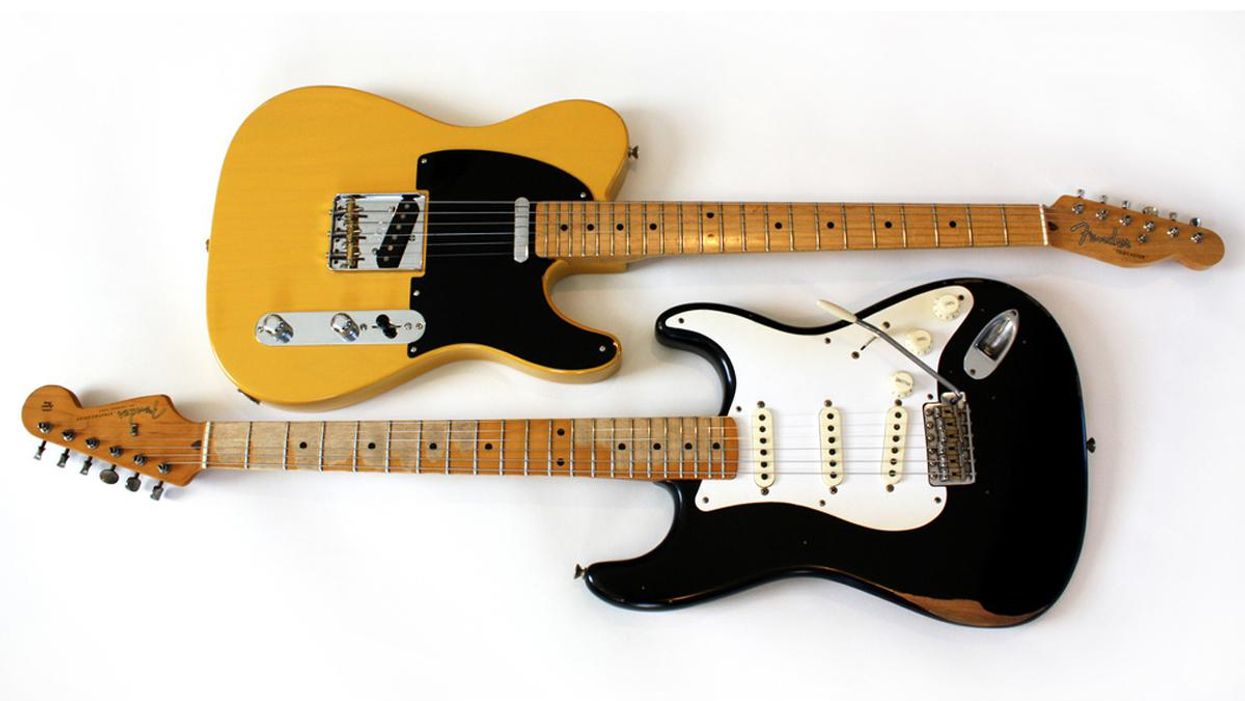

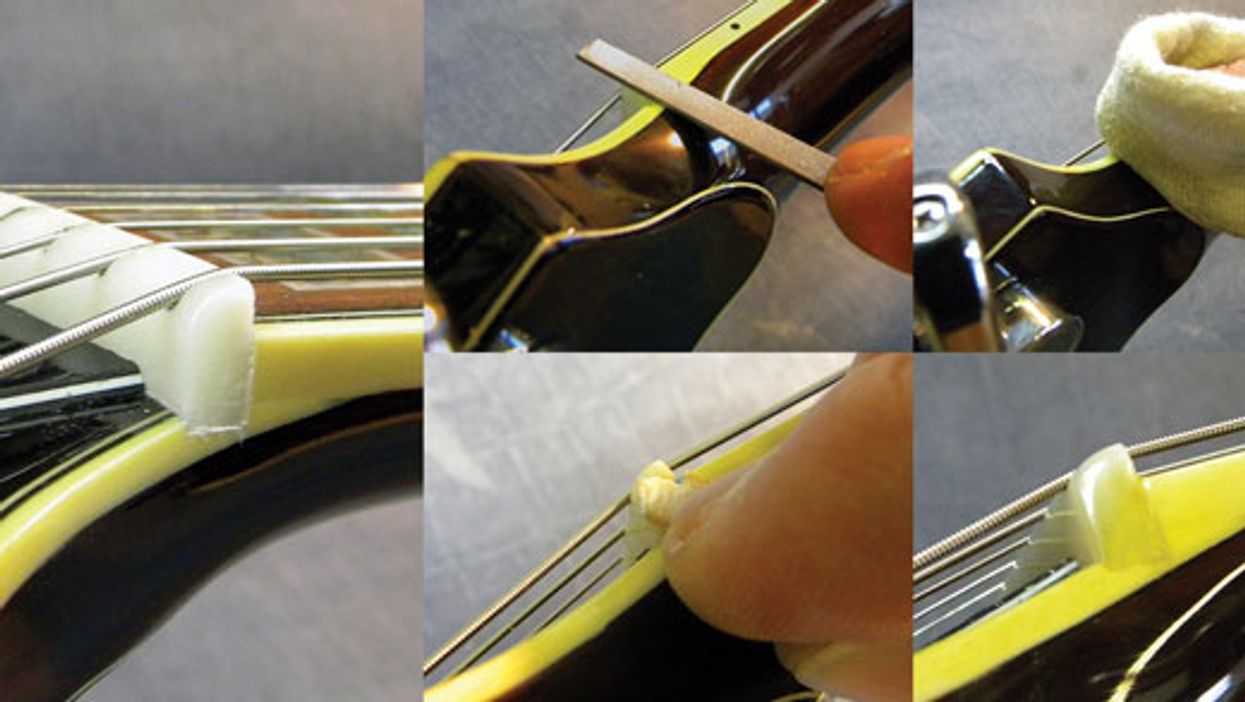
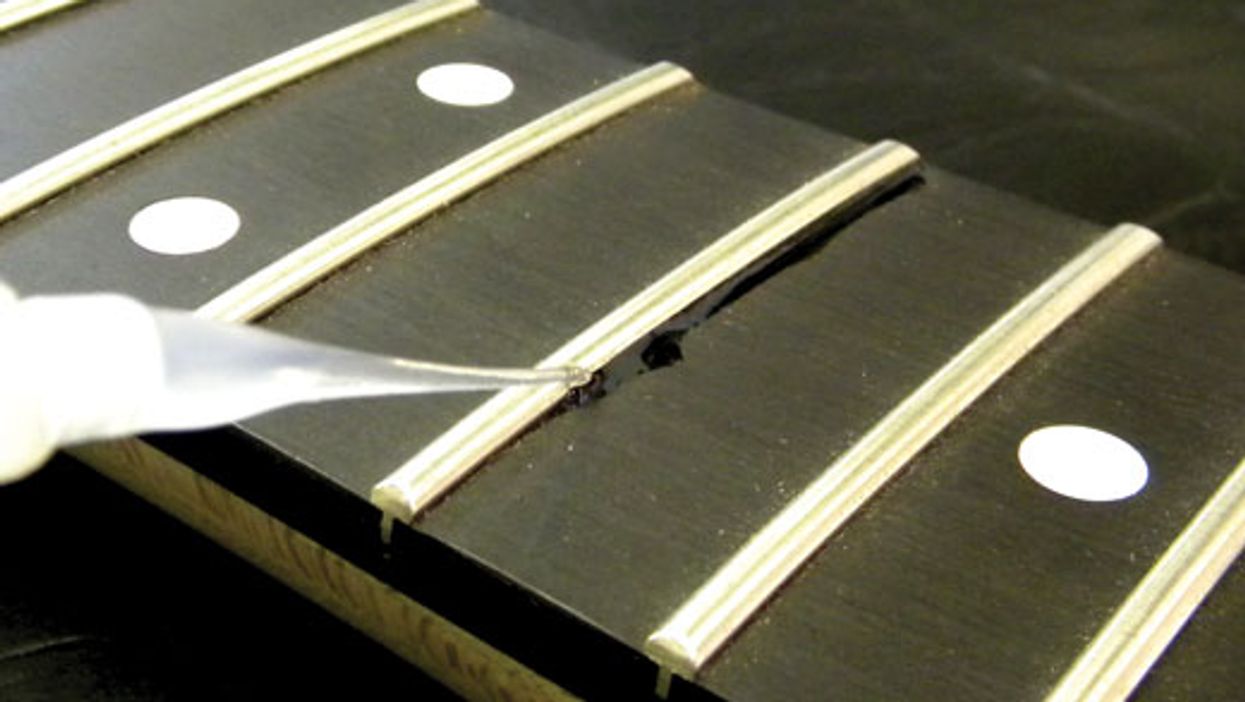
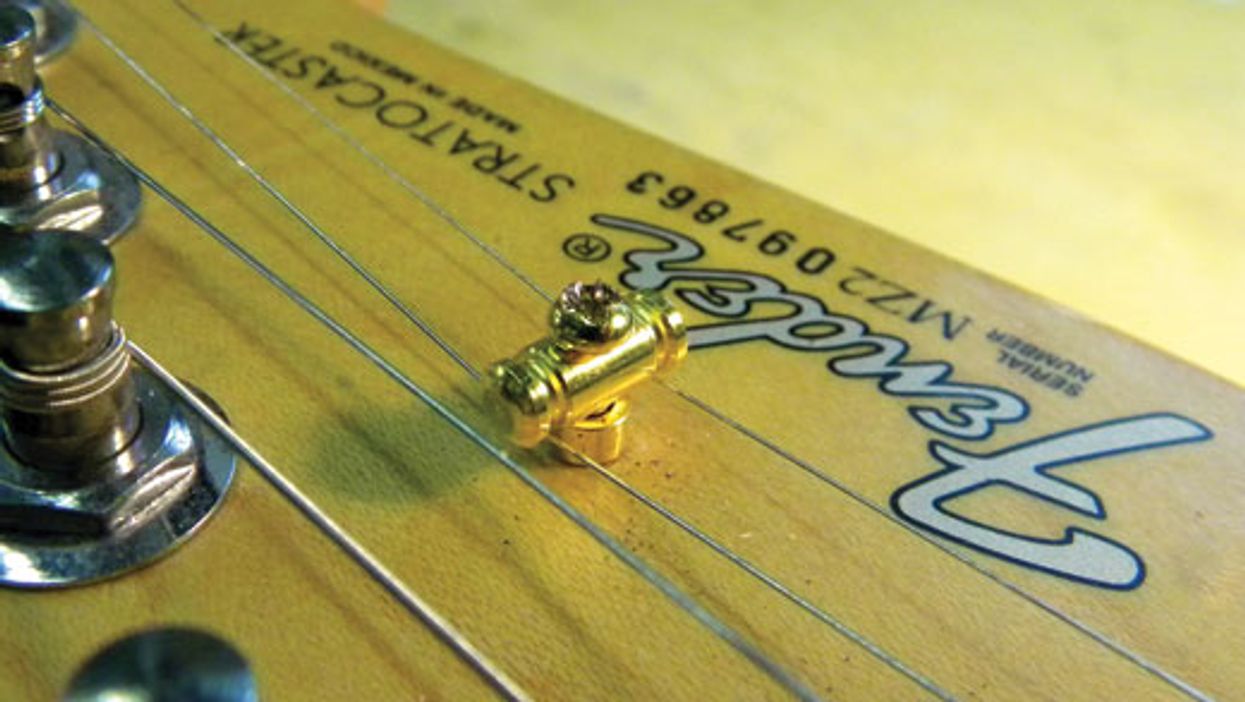


![Devon Eisenbarger [Katy Perry] Rig Rundown](https://www.premierguitar.com/media-library/youtube.jpg?id=61774583&width=1245&height=700&quality=70&coordinates=0%2C0%2C0%2C0)






















